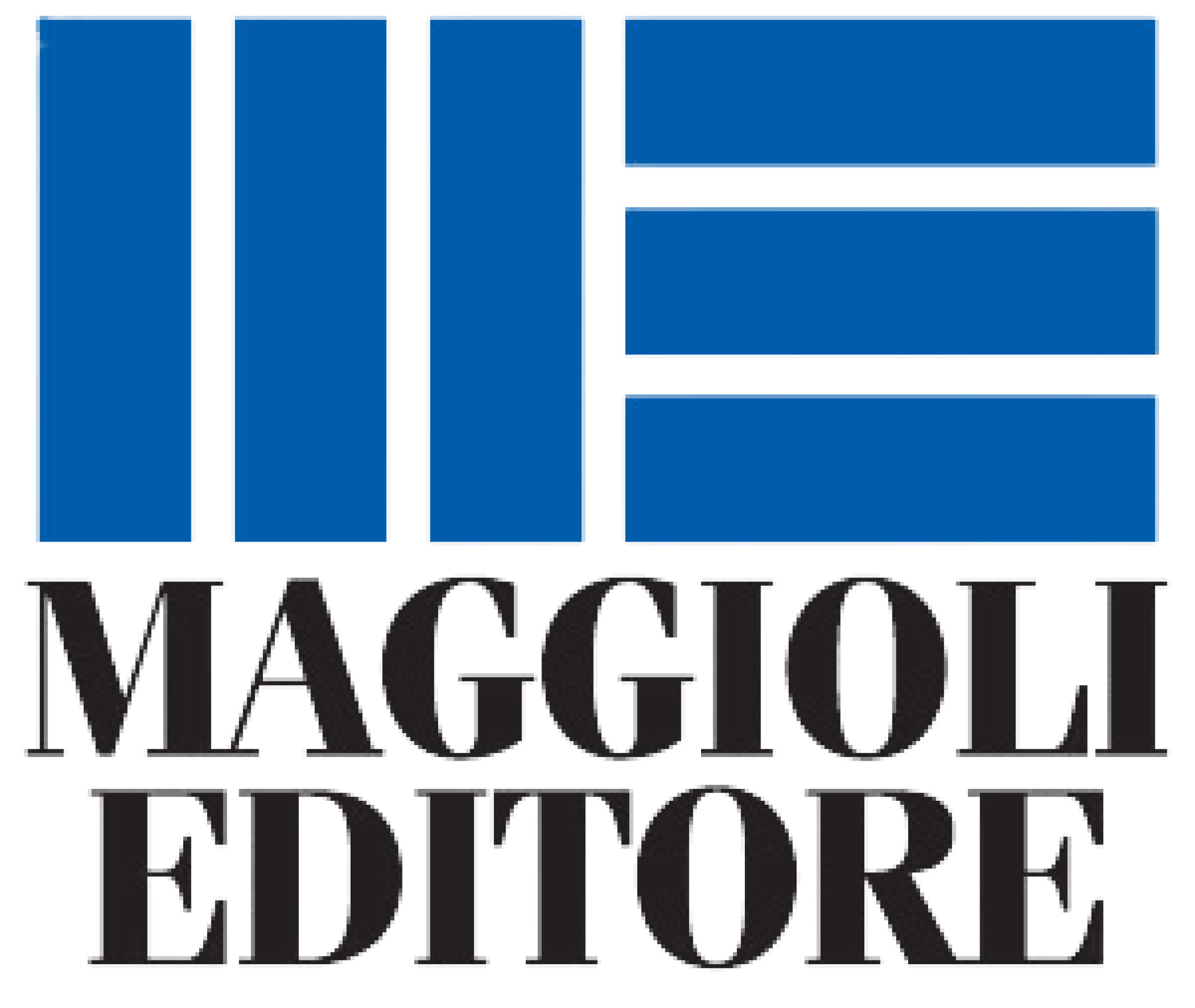La lotta al fenomeno del cybersquatting è un rischio che le aziende detentrici di marchi famosi devono mettere in conto, e la Giorgio Armani S.p.A. è sicuramente tra le realtà più attive nella protezione dei propri segni distintivi: basti considerare che si è rivolta alla WIPO ben tredici volte, senza contare la nota battaglia legale che ha avuto ad oggetto il domino “armani.it”. Tuttavia, se in precedenza i domini oggetto di contestazione contenevano la parola armani (armaniacquadigio.com, armanihoteldubai.com, emporio-armani-watches.com, ecc.) che rappresenta il “cuore” del marchio, questa volta la nota azienda di moda ha chiesto la riassegnazione del dominio “georgiamoni.com”, che almeno a prima vista, non sembrerebbe confondibile con il ben più noto dominio “giorgioarmani.com”. Ma una valutazione più attenta della decisione evidenzia elementi tali da poter assimilare la registrazione del marchio “georgiamoni.com” ad un’ipotesi di typosquatting. Occorre ad ogni modo fare una precisazione. Il termine typosquatting viene utilizzato per individuare l’attività di accaparramento di nomi a dominio che differiscono da quelli di aziende famose, per uno o più caratteri (ad es.: armmani.com). Tale attività tende a sfruttare eventuali errori di battitura da parte degli utenti, realizzando dei siti graficamente simili a quelli originali. Dal punto di vista pratico si potrebbe parlare di un vero e proprio sviamento della clientela. Tuttavia, nel caso del dominio georgiamoni.com, più che parlare di semplice errore di battitura entra in gioco l’elemento della pronuncia. Difatti, sebbene ad un italiano i termini giorgioarmani e georgiamoni possano apparire differenti, gli stessi termini pronunciati da un soggetto straniero (si pensi ad un inglese o ad un cinese) evidenzierebbero un’identità fonetica. Seguendo questo ragionamento è facile pensare che un utente straniero tenda a digitare un nome a domino così come lo pronuncia, di qui la confondibilità tra i due nomi a dominio.
Considerando che il domino gergiamoni.com era utilizzato in riferimento ad un sito per la vendita di abbigliamento online, è emerso anche l’elemento della malafede da parte del resistente nella registrazione e nell’utilizzo del dominio stesso. Infine, l’assenza di qualsiasi diritto o interesse legittimo da parte del resistente (un cittadino cinese), ha indotto Panelist nominato dalla WIPO a disporre la riassegnazione del dominio.
Di seguito la decisione
WIPO Arbitration and Mediation Center
ADMINISTRATIVE PANEL DECISION
Giorgio Armani S.p.A. Milan Swiss Branch Mendrisio v. peng zhihua
Case No. D2011-1511
1. The Parties
The Complainant is Giorgio Armani S.p.A. Milan Swiss Branch Mendrisio of Mendrisio, Switzerland, represented by Studio Rapisardi S.A., Switzerland.
The Respondent is peng zhihua of Changsha, China.
2. The Domain Name and Registrar
The disputed domain name <georgiamoni.com> is registered with GoDaddy.com, Inc.
3. Procedural History
The Complaint was filed with the WIPO Arbitration and Mediation Center (the “Center”) on September 8, 2011. On September 9, 2011, the Center transmitted by email to GoDaddy.com, Inc. a request for registrar verification in connection with the disputed domain name. On September 9, 2011, GoDaddy.com, Inc. transmitted by email to the Center its verification response disclosing that the language of the used registration agreement was English and the registrant and contact information for the disputed domain name which differed from the named Respondent and contact information in the Complaint. In response to a request for amendment by the Center on September 13, 2011, the Complainant filed an amendment to the Complaint on September 14, 2011.
The Center verified that the Complaint together with the amendment to the Complaint satisfied the formal requirements of the Uniform Domain Name Dispute Resolution Policy (the “Policy” or “UDRP”), the Rules for Uniform Domain Name Dispute Resolution Policy (the “Rules”), and the WIPO Supplemental Rules for Uniform Domain Name Dispute Resolution Policy (the “Supplemental Rules”).
In accordance with the Rules, paragraphs 2(a) and 4(a), the Center formally notified the Respondent of the Complaint, and the proceedings commenced on September 15, 2011. In accordance with the Rules, paragraph 5(a), the due date for Response was October 5, 2011. The Respondent did not submit any response. Accordingly, the Center notified the Respondent’s default on October 6, 2011.
The Center appointed Jonathan Agmon as the sole panelist in this matter on October 14, 2011. The Panel finds that it was properly constituted. The Panel has submitted the Statement of Acceptance and Declaration of Impartiality and Independence, as required by the Center to ensure compliance with the Rules, paragraph 7.
4. Factual Background
The Complainant is an international Italian fashion house that designs, manufactures, distributes, and retails clothing and other fashion products worldwide.
The Complainant was founded in 1975.
The Complainant, itself and through affiliated companies, owns multiple trademark registrations for the marks ARMANI and GIORGIO ARMANI around the world (“the Complainant’s trademarks”). For example: European Community trademark registration No. 000504282 – ARMANI, with the registration date of March 30, 1999; International trademark registration No. 838290 – ARMANI, with the registration date of August 3, 2004, designated, among others, to China, Morocco, Switzerland and Ukraine; United States trademark registration No. 2009673 – ARMANI, with the registration date of July 30, 1996; United States trademark registration No. 1081795 – GIORGIO ARMANI with the registration date of January 10, 1978; European Community trademark registration No. 000504258 – GIORGIO ARMANI, with the registration date of March 8, 1999, and many others.
The Complainant’s trademarks are widely-known and represent high-quality products.
The disputed domain name <georgiamoni.com> was registered on February 27, 2011. According to the information provided by GoDaddy.com, Inc., the disputed domain name was registered to the Respondent on August 9, 2011.
On June 7, 2011, the Complainant sent the Respondent a cease and desist letter, demanding the Respondent refrain from infringing the Complainant’s rights.
On June 12, 2011, the Respondent responded to the Complainant cease and desist letter, claiming that the website under the disputed domain name is a “shopping guide”, which refers users to the manufacturers’ official websites.
On June 17, 2011 the Complainant sent an additional letter to the Respondent, rejecting the Respondent’s claims in his response letter, and emphasizing that the registration of the disputed domain name itself, and the use of the disputed domain name infringe the Complainant’s rights.
The Respondent did not reply to the Complainant’s additional letter.
The disputed domain name currently redirects users to the domain name <yiyuti.com>, which resolve to a website titled “Yi Xiang Li Ying’s official website” that engages in the promotion and sale of fashion products.
5. Parties’ Contentions
A. Complainant
The Complainant argues that the disputed domain name is confusingly similar to the Complainant’s trademarks.
The Complainant further argues that the Complainant’s trademarks are well-known all around the world.
The Complainant further argues that numerous UDRP decisions have recognized the Complainant’s well-established rights in its famous trademarks.
The Complainant further argues that the difference between the disputed domain name and the Complainant’s GIORGIO ARMANI trademark is a result of misspelling. The Complainant further contends that the disputed domain name and the Complainant’s GIORGIO ARMANI trademark pronounced identically or almost identically in English and in Chinese.
The Complainant further argues that the Respondent is not commonly known by the disputed domain name or any variation thereof.
The Complainant further argues that it had not licensed or otherwise permitted the Respondent to use its trademarks, and is not affiliated or otherwise connected to the Respondent.
The Complainant further argues that the Respondent was aware of the Complainant when registering the disputed domain name, and that the disputed domain name was registered to divert Internet traffic from the Complainant’s website for commercial gain.
The Complainant further argues that the website under the disputed domain name used to state that it is the Chinese official website of the Complainant.
The Complainant further argues that it had informed the Respondent of its rights with a cease and desist letter.
For all of the above reasons, the Complainant requests the transfer of the disputed domain name.
B. Respondent
The Respondent did not reply to the Complainant’s contentions.
6. Discussion and Findings
A. Identical or Confusingly Similar
Paragraph 4(a)(i) of the Policy requires the Complainant to show that the disputed domain name is identical or confusingly similar to a trademark or service mark in which the Complainants have rights.
A registered trademark provides a clear indication that the rights in the mark shown on the trademark certificate belong to its respective owner. As stated above, the Complainant is the owner of multiple trademark registrations for the marks ARMANI and GIORGIO ARMANI around the world. For example: European Community trademark registration No. 000504282 – ARMANI, with the registration date of March 30, 1999; International trademark registration No. 838290 – ARMANI, with the registration date of August 3, 2004, designated, among others, to China, Morocco, Switzerland and Ukraine; United States trademark registration No. 2009673 – ARMANI, with the registration date of July 30, 1996; United States trademark registration No. 1081795 – GIORGIO ARMANI with the registration date of January 10, 1978; European Community trademark registration No. 000504258 – GIORGIO ARMANI, with the registration date of March 8, 1999, and many others.
The disputed domain name <georgiamoni.com> differs from the registered GIORGIO ARMANI trademark by changes in the spelling of the 2 elements of the GIORGIO ARMANI trademark (georgi v. GIORGIO and amoni v. ARMANI) and the additional gTLD “.com”.
Previous UDRP panels have ruled that in order to determine if the disputed domain name is confusingly similar to a trademark or service mark in which the Complainant has rights, the Panel must consider the phonetic and visual similarities, and can also consider the context in which the domain name is being used (see: Reuters Limited v. Global Net 2000, Inc, WIPO Case No. D2000-0441).
Comparing the disputed domain name to the Complainant’s registered mark GIORGIO ARMANI, bring to the conclusion that they are phonetically and visually similar. The suffix of the disputed domain name independently is phonetically and visually similar to the Complainant’s ARMANI trademark. The Panel cited the following with approval: “It is apparent from a comparison of the Complainants’ trademarks with the Domain Names that the primary components […] are visually and phonetically similar to the Complainants’[…] trademarks, and accordingly the Panel finds that the Domain Names are visually and phonetically similar to the corresponding trademarks in which the Complainants have rights” (Sanofi-Aventis, Merrell Pharmaceuticals Inc. v. Howard Hoffman, WIPO Case No. D2007-0042).
The additional gTLD “.com” is also insufficient in distinguishing the disputed domain name from the Complainant’s marks. Previous UDRP panels have asserted that the mere addition of a TLD to the disputed domain name does not avoid confusing similarity. See, F. Hoffmann-La Roche AG v. Macalve e-dominios S.A., WIPO Case No. D2006-0451 and Telstra Corporation Limited v. Nuclear Marshmallows, WIPO Case No. D2000-0003. Thus, the gTLD “.com” is without legal significance since the use of a TLD is technically required to operate the domain name.
Also, the fact that the disputed domain name redirects users to a website in Chinese that engages in the promotion and sale of fashion products, and used to include a reference to the Complainant’s official Chinese website, affirms the conclusion that the disputed domain name is confusingly similar to the Complainant’s trademarks.
Consequently, the Panel finds that the Complainant has shown that the disputed domain name is confusingly similar to a trademark in which the Complainant has rights, thus satisfying paragraph 4(a)(i) of the Policy.
B. Rights or Legitimate Interests
Once the complainant establishes a prima facie case that the respondent lacks rights or legitimate interests in the disputed domain name, the burden shifts to the respondent to show that it has rights or legitimate interests in respect to the disputed domain name. See WIPO Overview of WIPO Panel Views on Selected UDRP Questions, Second Edition (“WIPO Overview 2.0”), paragraph 2.1 and Policy, paragraph 4(a)(ii).
In the present case, the Complainant alleged that the Respondent has no rights or legitimate interests in respect of the disputed domain name and the Respondent failed to assert any such rights, or legitimate interests.
The Panel finds that the Complainant established such a prima facie case inter alia due to the fact that the Complainant has not licensed or otherwise permitted the Respondent to use the Complainant’s trademarks or a variation of them. The Respondent did not submit a response and did not provide any evidence to show any rights or legitimate interests in the disputed domain name. Thus, the Respondent did not rebut the Complainant’s prima facie case.
Accordingly, the Panel finds that the Respondent has no rights or legitimate interests in respect of the disputed domain name, thus satisfying paragraph 4(a)(ii) of the Policy.
C. Registered and Used in Bad Faith
The Complainant must show that the Respondent registered and is using the disputed domain name in bad faith (Policy, paragraph 4(a)(iii)). Paragraph 4(b) of the Policy provides circumstances that may prove bad faith under paragraph 4(a)(iii).
Paragraph 14(b) of the Rules provides that, in the absence of exceptional circumstances, a panel shall draw such inferences as it considers appropriate from the failure of a party to comply with a provision or requirement of the Rules.
In this present case, the Panel finds there are no exceptional circumstances for the failure of the Respondent to submit a response.
The Panel can draw from the Respondent’s failure to reply the following two inferences:
(i) the Respondent does not deny the facts which the Complainant asserts, and (ii) the Respondent does not deny the conclusions which the Complainant asserts can be drawn from these facts. The Panel does, however, the responsibility of determining which of the Complainant’s assertions are established as facts, and whether the conclusions asserted by the Complainant can be drawn from the established facts (Reuters Limited v. Global Net 2000, Inc, supra).
The Complainant submitted evidence, which shows that the Respondent registered the disputed domain name after the Complainant registered its trademark. According to the evidence filed by the Complainant and the trademark search performed by the Panel, the Complainant owns a registration for the Complainant’s marks since the year 1978. It is suggestive of the Respondent’s bad faith in these particular circumstances that the trademark, owned by the Complainant, was registered long before the registration of the disputed domain name (Sanofi-Aventis v. Abigail Wallace, WIPO Case No. D2009-0735). In this Panel’s view, this conclusion is even more valid when taking into account the vast goodwill that the Complainant had gained in its well-known trademarks.
Paragraph 4(b)(iv) of the Policy provides that it shall be evidence of bad faith registration and use by the respondent, if by using the domain name the respondent had intentionally attempted to attract, for commercial gain, Internet users to the websites or other on-line locations to which the domain name is resolved to, by creating a likelihood of confusion with the complainant’s mark as to the source, sponsorship, affiliation, or endorsement of the websites or locations or of a product or service on the websites or locations to which the domain name resolved to.
The Respondent is using the Complainant’s trademark to promote similar goods to the goods of the Complainant. Also, the Respondent acknowledged in its response to the cease and desist letter that the Respondent has knowledge of the Complainant. The Respondent while having knowledge of the Complainant intended to trade off its goodwill. The Respondent’s actions therefore constitute bad faith under the Policy. See Herbalife International, Inc. v. Surinder S. Farmaha, WIPO Case No. D2005-0765, stating that “the registration of a domain name with the knowledge of the complainant’s trademark registration amounts to bad faith”. Indeed, the Respondent’s use of the disputed domain name without rights or legitimate interests for promoting similar goods constitutes bad faith on behalf of the Respondent.
The Panel also notes that the disputed domain name is confusingly similar to the Complainant’s trademarks. Previous UDRP panels ruled that “a likelihood of confusion is presumed, and such confusion will inevitably result in the diversion of Internet traffic from the Complainant’s site to the Respondent’s site” (see Edmunds.com, Inc v. Triple E Holdings Limited, WIPO Case No. D2006-1095). To this end, prior UDRP panels have established that attracting Internet traffic for commercial purposes by using a domain name that is identical or confusingly similar to a registered trademark may be evidence of bad faith under paragraph 4(b)(iv) of the UDRP.
Based on the evidence presented to the Panel, including the late registration of the disputed domain name and the confusing similarity between the disputed domain name and the Complainant’s trademarks, the Panel draws the inference that the disputed domain name was registered and used in bad faith.
Accordingly, the Panel finds that the Complainant has met its burden under paragraph 4(a)(iii) of the Policy.
7. Decision
For all the foregoing reasons, in accordance with paragraphs 4(i) of the Policy and 15 of the Rules, the Panel orders that the disputed domain name <georgiamoni.com> be transferred to the Complainant.
Jonathan Agmon
Sole Panelist
Dated: October 30, 2011





















Scrivi un commento
Accedi per poter inserire un commento